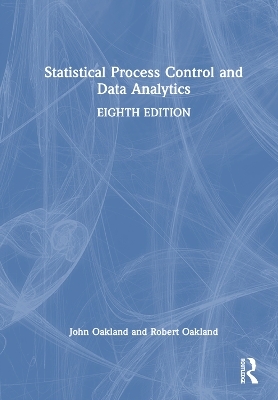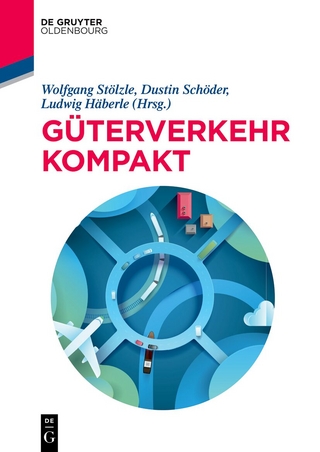
Statistical Process Control and Data Analytics
Routledge (Verlag)
978-1-032-57371-7 (ISBN)
The business, commercial and public-sector world has changed dramatically since John Oakland wrote the first edition of Statistical Process Control in the mid-1980s. Then, people were rediscovering statistical methods of ‘quality control,’ and the book responded to an often desperate need to find out about the techniques and use them on data. Pressure over time from organizations supplying directly to the consumer, typically in the automotive and high technology sectors, forced those in charge of the supplying, production and service operations to think more about preventing problems than how to find and fix them. Subsequent editions retained the ‘tool kit’ approach of the first but included some of the ‘philosophy’ behind the techniques and their use.
Now entitled Statistical Process Control and Data Analytics, this revised and updated eighth edition retains its focus on processes that require understanding, have variation, must be properly controlled, have a capability and need improvement – as reflected in the five sections of the book. In this book the authors provide not only an instructional guide for the tools but communicate the management practices which have become so vital to success in organizations throughout the world. The book is supported by the authors' extensive consulting work with thousands of organizations worldwide. A new chapter on data governance and data analytics reflects the increasing importance of big data in today’s business environment.
Fully updated to include real-life case studies, new research based on client work from an array of industries and integration with the latest computer methods and software, the book also retains its valued textbook quality through clear learning objectives and online end-of-chapter discussion questions. It can still serve as a textbook for both student and practicing engineers, scientists, technologists, managers and anyone wishing to understand or implement modern statistical process control techniques and data analytics.
John Oakland is one of the world’s top ten gurus in quality and operational excellence; Executive Chairman, Oakland Group; Emeritus Professor of Quality & Business Excellence at Leeds University Business School; Fellow of the Chartered Quality Institute (CQI); Fellow of the Royal Statistical Society (RSS); Fellow of the Cybernetics Society (CybSoc); Fellow of Research Quality Association (RQA). Robert Oakland is Director in the Oakland Group and works across the globe helping complex organizations to unlock the power in their data using advanced analytical and statistical techniques to improve the quality, cost and delivery of their products and services.
Preface
Part 1 Process understanding
1 Quality, processes and control
Objectives
1.1 The basic concepts
1.2 Design, conformance and costs
1.3 Quality, processes, systems, teams, tools and SPC
1.4 Some basic tools
1.5 SPC, ‘big data’ and data analytics
Chapter highlights
References and further reading
2 Understanding the process
Objectives
2.1 Improving customer satisfaction through process management
2.2 Information about the process
2.3 Process mapping and flowcharting
2.4 Process analysis
2.5 Statistical process control and process understanding
Chapter highlights
References and further reading
3 Process data collection and presentation
Objectives
3.1 The systematic approach
3.2 Data collection
3.3 Bar charts and histograms
3.4 Graphs, run charts and other pictures
3.5 Data quality and sharing
3.6 Conclusions
Chapter highlights
References and further reading
Part 2 Process variability
4 Variation – understanding and decision making
Objectives
4.1 How some managers look at data
4.2 Interpretation of data
4.3 Causes of variation
4.4 Accuracy and precision
4.5 Variation and management
Chapter highlights
References and further reading
5 Variables and process variation
Objectives
5.1 Measures of accuracy or centering
5.2 Measures of precision or spread
5.3 The normal distribution
5.4 Sampling and averages
Chapter highlights
Worked examples using the normal distribution
References and further reading
Part 3 Process control
6 Process control using variables
Objectives
6.1 Means, ranges and charts
6.2 Are we in control?
6.3 Do we continue to be in control?
6.4 Choice of sample size and frequency and control limits
6.5 Short-, medium- and long-term variation
6.6 Process control of variables in the world of big data
Chapter highlights
Worked examples
References and further reading
7 Other types of control charts for variables
Objectives
7.1 Beyond the mean and range chart
7.2 Process control for individual data
7.3 Median, mid-range and multi-vari charts
7.4 Moving mean, moving range and exponentially weighted moving average (EWMA) charts
7.5 Control charts for standard deviation (σ)
7.6 Techniques for short-run SPC
7.7 Summarizing control charts for variables and big data
Chapter highlights
Worked example
References and further reading
8 Process control by attributes
Objectives
8.1 Underlying concepts
8.2 Process control for number of defectives or non-conforming units
8.3 Process control for proportion defective or non-conforming units
8.4 Process control for number of defects/non-conformities
8.5 Attribute data in non-manufacturing
Chapter highlights
Worked examples
References and further reading
9 Cumulative sum (cusum) charts
Objectives
9.1 Introduction to cusum charts
9.2 Interpretation of simple cusum charts
9.3 Product screening and pre-selection
9.4 Cusum decision procedures
Chapter highlights
Worked examples
References and further reading
Part 4 Process capability
10 Process capability for variables and its measurement
Objectives
10.1 Will it meet the requirements?
10.2 Process capability indices
10.3 Interpreting capability indices
10.4 The use of control chart and process capability data
10.5 Service industry example of process capability analysis
Chapter highlights
Worked examples
References and further reading
Part 5 Process improvement
11 Process problem solving and improvement
Objectives
11.1 Introduction
11.2 Pareto analysis
11.3 Cause and effect analysis
11.4 Scatter diagrams
11.5 Stratification
11.6 Summarizing problem solving and improvement
Chapter highlights
Worked examples
References and further reading
12 Managing out-of-control processes
Objectives
12.1 Introduction
12.2 Process improvement strategy
12.3 Use of control charts and data analytics for trouble-shooting
12.4 Assignable or special causes of variation and big data
Chapter highlights
References and further reading
13 Designing the statistical process control system with big data
Objectives
13.1 SPC and the quality management system
13.2 Teamwork and process control/improvement
13.3 Improvements in the process
13.4 Taguchi methods
13.5 System performance – the confusion matrix
13.6 Moving forward with big data analytics and SPC
Chapter highlights
References and further reading
14 Six-sigma process quality
Objectives
14.1 Introduction
14.2 The six-sigma improvement model
14.3 Six-sigma and the role of design of experiments
14.4 Building a six-sigma organization and culture
14.5 Ensuring the financial success of six-sigma projects
14.6 Concluding observations and links with excellence models and data analytics
Chapter highlights
References and further reading
15 Data governance and data analytics
Objectives
15.1 Introduction – data attributes
15.2 Data governance strategies
15.3 Data analytics and insight
15.4 Future of process control and assurance
Chapter highlights
References and further reading
Appendices
A The normal distribution and non-normality
B Constants used in the design of control charts for mean
C Constants used in the design of control charts for range
D Constants used in the design of control charts for median and range
E Constants used in the design of control charts for standard deviation
F Cumulative Poisson probability curves
G Confidence limits and tests of significance
H OC curves and ARL curves for X and R charts
I Autocorrelation
J Approximations to assist in process control of attributes
K Glossary of terms and symbols
Index
| Erscheinungsdatum | 23.07.2024 |
|---|---|
| Zusatzinfo | 114 Tables, black and white; 158 Line drawings, black and white; 158 Illustrations, black and white |
| Verlagsort | London |
| Sprache | englisch |
| Maße | 174 x 246 mm |
| Gewicht | 820 g |
| Themenwelt | Wirtschaft ► Betriebswirtschaft / Management ► Logistik / Produktion |
| Wirtschaft ► Volkswirtschaftslehre | |
| ISBN-10 | 1-032-57371-6 / 1032573716 |
| ISBN-13 | 978-1-032-57371-7 / 9781032573717 |
| Zustand | Neuware |
| Haben Sie eine Frage zum Produkt? |
aus dem Bereich


